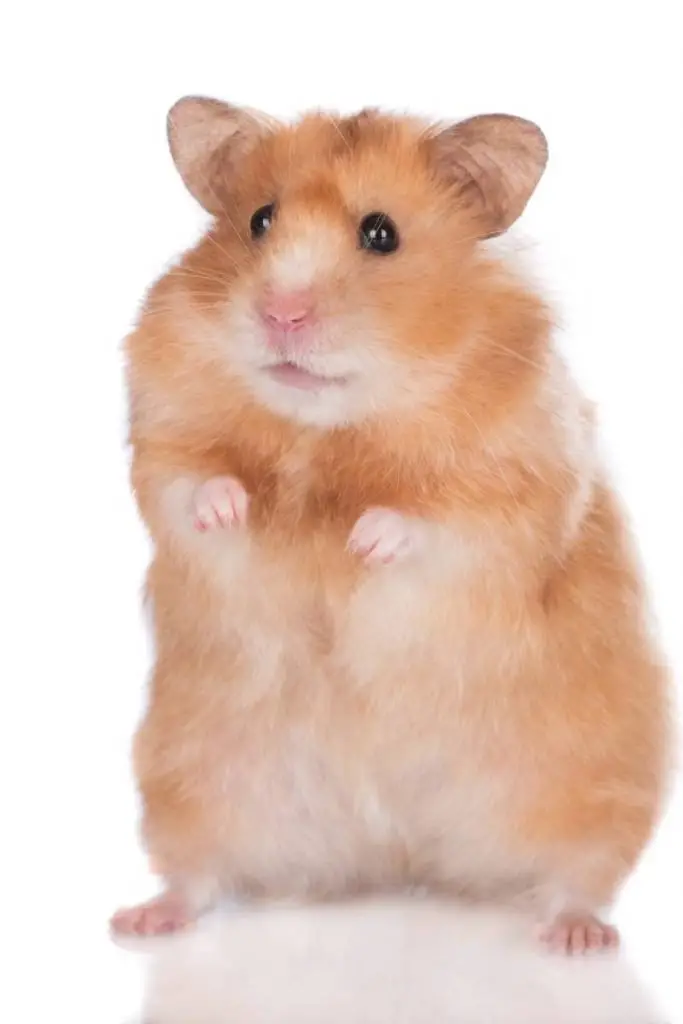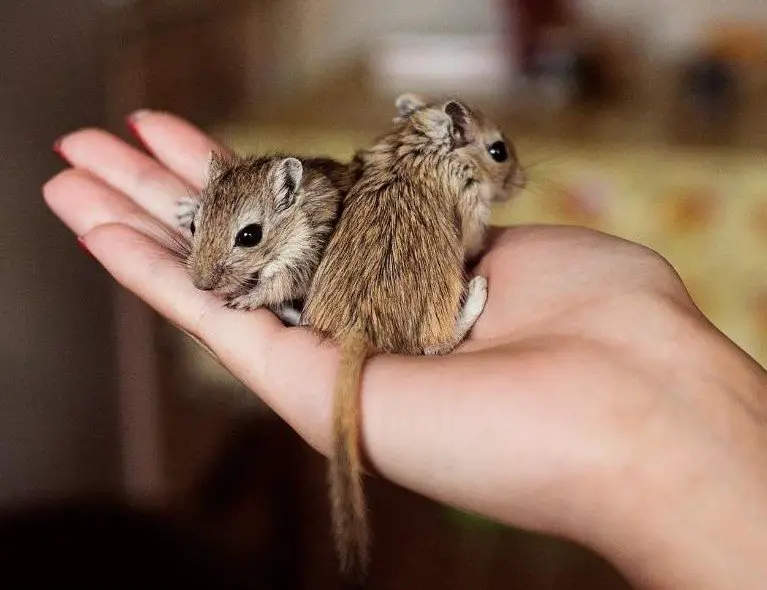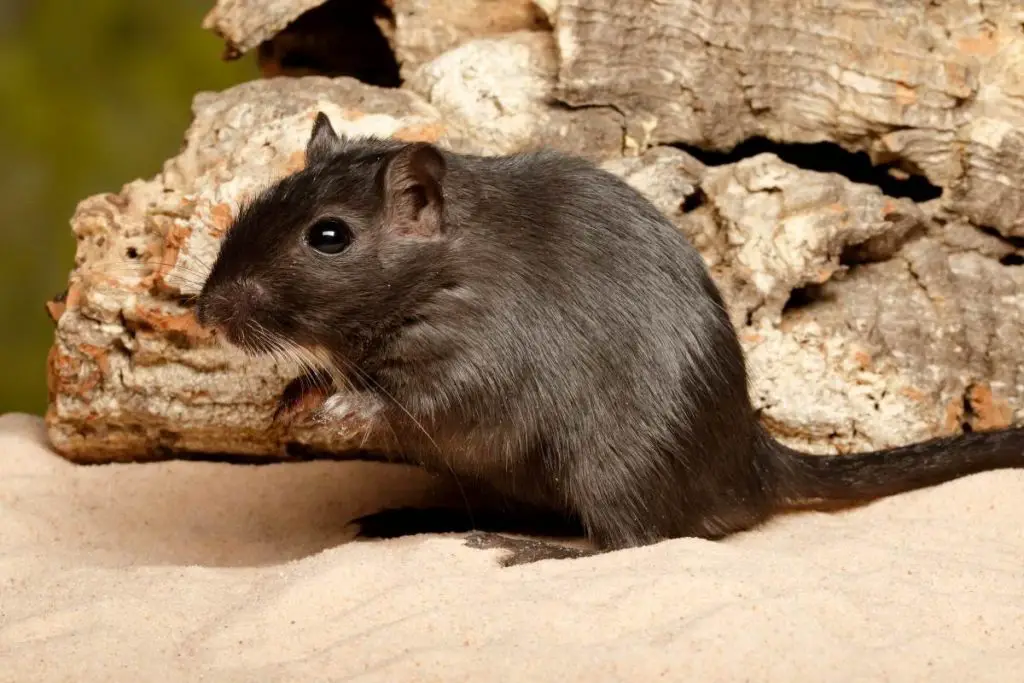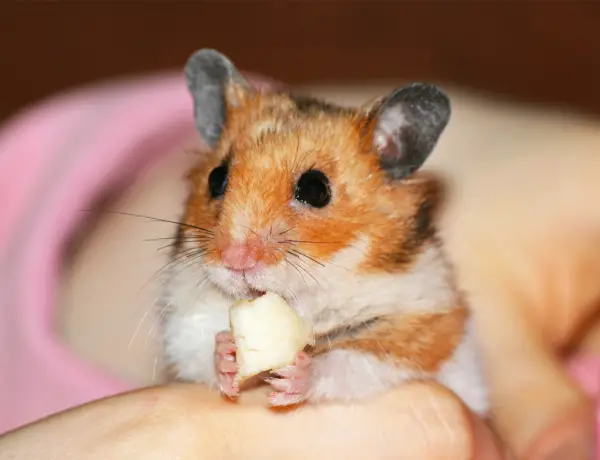Deciding between a hamster and a gerbil can be tough because there are many similarities, and they both can make excellent pets in the right situation. The decision between one or the other really depends on what your preferences are.
Although there are many similarities between hamsters and gerbils, there are also some differences. These differences include physical appearances, behavior, habitat, and care.
In order to decide which pet you want to bring into your home, you will need to know about each animal. Not only will that give you more insight into your decision, but it will also prepare you to raise and take care of the pet you decide on. It is often a common misconception that they can live together. Although you can certainly own both, your gerbil and hamster will need to have separate habitats.
Table of Contents
The Differences Between Hamster and Gerbils
Hamsters and gerbils are small, adorable animals. They both can make great house pets, and if raised right, often enjoy human companionship. The more you educate yourself, the better you will be able to care for whichever pet you choose.
Physical Appearance

Though they are both small, hamsters and gerbils are pretty easy to tell apart. Hamsters tend to be on the shorter and plumper side. They have tiny noses and short, stubby tails that make them resemble an extremely miniature bear. They have wide feet that make their walk more of a waddle, which is very cute. Syrian hamsters can be as large as six inches long, while dwarf hamsters are usually only 2-3 inches long.
Hamsters have a very different feature from gerbils, and that is that they have extra room in their mouths called cheek pouches that allow them to carry their food to their hiding places. They can have short or long hair in any natural color you can think of, from white, brown, gray, black, or even auburn. You can find one with straight hair and or wavy hair, and they often have patterns in their fur. Males usually have longer, fluffier hair than the females do.
Gerbils’ features are longer and slimmer than hamster features are. They have long noses, long thin tails, and long hind legs, making them look more like a rat than a hamster but helping them to be quick and athletic.
Gerbils have soft coats that tend to be very thick. They come in about 50 different color combinations, including red, brown, white, grey, and tan. Gerbils can be one solid color or a mixture of several colors. Some species have markings on their head, while others have white patches on their belly or thick hair behind their ears. Their tails are thin and covered in fur as well. However, this fur is thin and can easily slip off of the tail, causing injury if the gerbil is ever picked up by its tail. Therefore, a gerbil should never be picked up this way.
Temperaments and Behaviors
Hamsters are solitary animals and generally prefer to live alone. They are extremely territorial and can even fight to the death if you try to put them in the same enclosure. Hamsters are likely to bite if they are threatened or scared. But if you handle them regularly, they will learn that you do not want to hurt them and become less likely to bite. In some cases, they may bite if they smell something tasty on your hands. So, be sure to wash your hands before handling them.
Hamsters are nocturnal rodents and usually sleep during the day. They can get extremely grumpy if you wake them up, so it is best to spend time with them in the early morning or late evening when they naturally become more active. Dwarf hamsters, especially, are very smart and can sometimes recognize and respond to their owner’s voice. Syrian hamsters are more attention-seeking and interactive than other species of hamsters.
Gerbils differ from hamsters in that they are much more social creatures. They often live in small groups of 3 or 4 and do best with same-sex animals. Gerbils are usually less likely to bite than hamsters are. They can be even less likely to bite if they are handled from around the age of 18 to 35 days old. That is the best time to get gerbils used to human handling.

Gerbils are thought to be intelligent and active pets. They are incredibly energetic and always need to have some kind of physical and mental stimulation. That means lots of toys for them to interact with! Gerbils chew on everything, which means plastic toys can be dangerous for them. They do well with a lot of tunnels, bridges, and wheels to keep them busy.
Gerbils are very inquisitive of their people. They like to explore and get to know their owners and their homes. They will do well living in an active room in the house so that they can watch your daily activities. You might even catch them staring at you while you go about your day. Gerbils are very social creatures, and it is best if they are handled or shown some sort of attention on a daily basis.
Lifespans
Unfortunately, neither hamsters nor gerbils are particularly long-lived. Hamsters generally only live from 1.5-2 years. A healthy hamster with proper care may make it to three years old, but that is not very common.
Gerbils have a slightly longer lifespan of 3-5 years. The oldest gerbil on record lived to be over eight years old, but that is not the case for most.
Lifestyles Differences
Hamsters and gerbils do have different lifestyles. As mentioned before, hamsters are nocturnal. That means they spend most of their day sleeping. They explore throughout the night and keep active on their wheel or eating and hiding their food. If they are not doing that, they spend much of their time getting their nest ready to sleep in. Sleep is a hamster’s favorite pastime.

Contrarily, gerbils are more diurnal. They are more likely to spend some of their day tunneling, chewing on things, shredding up their nesting material, watching their owners, or rearranging their house. They will nap throughout the day and have some activity at night, but not as much as a hamster. Gerbils are one of the most energetic of small rodents that you can keep as a pet.
Care and Safety Requirements
When it comes to owning any pet, safety should always be a priority, both for you and for your pet. All the general rules apply; keep toxic materials and foods away from your pet, be sure their toys are safe for them to play with, and make sure their enclosures are safe and secure so they cannot get out and harm themselves.
Hamsters and gerbils are both rodents. Rodents often carry germs that can make humans sick, so it is essential to wash your hands after handling your hamster or gerbil. Rodents are not recommended as pets for children under five years old, pregnant women, or immune-compromised people, as they all may be more prone to sickness from rodent germs.
When you are thinking about keeping a small rodent as a pet, it is important to remember that rodents like to chew. If you are not careful, they could eat their way right out of their enclosure. When considering the materials their cages are made of, glass is probably the safest and ideal for both animals. If you decide on a metal cage, be sure there is not any plastic coating over the metal and that the bars are close enough together that your pet will not get out.
Diet and Nutrition
Their diets are slightly different in the sense that they eat different proteins. They both eat greens, fruit, and seeds, but their required protein levels can vary slightly.
Hamsters can eat chicken or egg as treats and should have an 18 to 23 percent protein food formula. You can either make this yourself on a nightly basis or buy a prepackaged food such as Oxbow Fortified Nutrition.
Gerbils should not eat chicken and eggs as hamsters do. Instead, they can be fed crickets and mealworms and should have a 14 to 15 percent protein food formula. Both of these insects are a great source of protein, so much so that you should be careful of the number of mealworms you feed so as not to increase their protein above the recommended levels.
Both hamsters and gerbils should be given small bits of fresh fruits and vegetables every few days. However, be careful not to offer your hamster too many fresh fruits and vegetables. They tend to store the food for later, and if there is more than they can eat in a day or two, that stored food may become moldy.
Items You Will Need for Your Hamster or Gerbil
Bedding
You need to carefully choose the bedding for your hamster or gerbil because it is what they will live in and be surrounded by throughout the day. For gerbils, you might spend a bit more for bedding because they need more to be able to tunnel through. Hamsters do not tend to tunnel as much, so you would not need to buy as much for their enclosure.
Their bedding is meant to serve as a clean and comfortable environment for your pets while keeping the unpleasant smells away. Please stay away from cedar or pine chips as bedding, as the fumes from those can be dangerous for them.
When buying bedding for your pets, it is always a good idea to consider buying it in large bails. Purchasing your bedding this way will ensure you are getting the best value for your money, and you will not need to buy it as frequently.
Enclosures
Hamster Cages
Because hamsters usually prefer to live alone and do not tend to be very destructive creatures, a smaller cage will do just fine for them. You will not need additional depth for extra bedding or more room to fit more hamsters because you will need to house them alone and separate from any other animals. They are simple creatures that only require a little bit of exercise and an enormous amount of sleep. Therefore, a decent hamster cage is pretty easy to find.
One of the best cages on the market right now is the Prevue Pet Products Universal Small Animal Home. It has a tub bottom that is over 6″ deep and is perfect for your critter’s bedding and home accessories, as well as an additional level for them to explore. Since the top half of the cage is not solid, it offers plenty of fresh air and gives the cage an open atmosphere. Additionally, there is an entry door on both the top and the side for easy access.
If you have a dwarf hamster that requires even less space, you could also consider the Favola Hamster Cage. This cage is only slightly smaller with an almost 5-inch deep tub bottom that is see-through. It has the main floor just above the tub covering nearly the entire cage, except for an entry point, and an opening for the wheel. Additionally, it comes with a wheel, a water bottle, a food dish, and a little hide-out home.
Hamsters need their cage thoroughly cleaned every 4 to 5 weeks with spot cleaning throughout those weeks. You can little train them with critter litter so that they will go to the bathroom in one designated area, which will make cleanup easier. They do not tend to dig and tunnel as much as gerbils do, so you will not need to worry about putting excessive amounts of bedding in their cage.
Gerbil Cages
When shopping for a gerbil cage, you might start to get a little frustrated. Not only does it have to be large enough, but it must also be chew proof.
Gerbils need at least a 5-gallon tank per gerbil to ensure there is enough living space for them. Aquariums are best to use for both hamsters and gerbils. Gerbils chew and eat everything, but they will not be able to chew through the glass. They need their enclosure thoroughly cleaned at least every two weeks. They should have a solid wheel to run on, so they do not risk getting their tails or feet caught in rungs on the wheel. Gerbils like to burrow, so they enjoy extra bedding in their enclosure for tunneling and burrowing.
A popular gerbil cage to consider is the Niteangel Glass Pet Cage. This enclosure offers over 50 gallons of room to explore and is made of thick glass designed to allow plenty of ventilation. It is rather expensive because it is made mostly of glass, and is very large and heavy, weighing about 60 lbs. With that much available space, you will be able to house several gerbils comfortably. This cage will not have any additional levels for you gerbils to play on, and it will be difficult to add a tank topper because there is nowhere to attach anything to the enclosure. The same goes for any toys and water bottles you plan to put in the cage. The glass surface makes it more challenging to customize this enclosure for your animals. That is why having a tank with a cage topper can come in handy.
If you choose a cage that can be added on to, you might want to try the Kaytee My First Home Tank Topper. This cage topper fits right on top of your 10- gallon tank, so it will give your gerbils an additional level to roam and more room to explore. It is reasonably priced and coated in a chew-proof material to ensure it is extra safe for them to live in. The only downside to this cage topper is that you will need to replace all of the plastic accessories and toys with metal ones. Your gerbils will chew through the plastic accessories and be at risk for internal injuries from ingesting such a material. Some customers have said the cage topper does not fit all types of tanks, so be sure to research and make sure it is appropriate for the tank you have.
What to Look for When Purchasing Your Pet
As you search for your new pet, be sure to know the signs of neglect and the health risks that usually come with hamsters and gerbils. Healthy hamsters should be sleeping when you visit them, while gerbils will likely be more active.
Hamsters are susceptible to a disease called “wet-tail,” which is usually contracted from a dirty enclosure or too much stress. Signs of this disease include diarrhea, as well as scabs on their face, ears, or feet, sneezing and runny nose, watery eyes, and a tilted head or lack of balance.
Before you decide to purchase either a hamster or a gerbil, be sure to check the laws in your area. For instance, some species of hamsters (not including Syrian and dwarf hamsters) are illegal in California, and all species of hamsters are illegal in Hawaii. Gerbils are illegal to own in both Hawaii and in California. Your local Department of Agriculture should be able to let you know about any legal questions you have about either pet.
Conclusion
Gerbils will show you love and attention every so often, between their tunneling, playing, and their napping. They do not need a lot of maintenance because their bedding absorbs much of the foul odor that comes with them, and they are not generally dirty animals. In general, they are less likely to bite and more active.
Hamsters, while less active, are also generally less affectionate and quicker to bite. They also do not chew as much, so they may be easier to house.
Hopefully, now you have enough information to make an educated decision as to which pet will fit better with your lifestyle. Where the gerbil is full of energy and more inclined to cuddle with you, the hamster is less destructive and easier to maintain. Each type of animal is a rodent and has its own peculiarities and quirks, but both can make good pets. They have many similarities, but their differences need to be considered when choosing which one to bring into your home.




